An essay by art historian Jean Stern on the Fleischer Collection, the earliest and one of the most extensive collections dedicated to California Impressionism. The Irvine Museum recently published the comprehensive and beautiful book, “The Fleischer Collection: Masterworks of California Impressionism.”
BY JEAN STERN
The Fleischer Collection is the earliest significant and one of the most extensive collections dedicated to California Impressionism. It was formed in 1983 at a time when works from this pivotal American art style were just coming to the fore and examples were easily available and relatively inexpensive.
Later, the collection became the core of the Fleischer Museum, a nonprofit, free-to-the-public institution that operated in Scottsdale, Arizona, from 1990 to 2002 with Donna Fleischer as director. Since then, the Fleischer Collection has remained a private collection in the home of Mort and Donna Fleischer.
I met Mort Fleischer and shortly thereafter his wife, Donna, in late 1983, when I was director of Petersen Galleries in Beverly Hills. Owned by magazine publisher Robert E. Petersen and his wife, Margie, it was one of the first art galleries to specialize in California Impressionist paintings. Moreover, it was the first gallery to present these works on a national basis through advertising, books, and exhibition catalogues.
The term itself, “California Impressionism,” originated there. On any given day, one could walk into Petersen Galleries and see important paintings by Guy Rose, Edgar Payne, William Wendt, Joseph Kleitsch, Franz Bischoff, Alson Clark, and many others.
At the time I met Mort, the gallery was located at 270 North Rodeo Drive, just one block from the Beverly Wilshire Hotel. Later, the gallery moved to 332 North Rodeo Drive, in the Anderton Court Building, designed by Frank Lloyd Wright and owned by Robert and Margie Petersen.
One morning early in December 1983, Mort Fleischer walked into the gallery and introduced himself. He told me that he was from Phoenix, Arizona, and was staying at the Beverly Wilshire Hotel. The evening before, he had taken a walk up Rodeo Drive to look in the shop windows. As he looked through our window, he liked what he saw and resolved to return the next morning.
Mort and I chatted as we walked around looking at one painting after the other. He pointed out what piqued his interest, and I gave him a brief biography of the artist, the quality of the painting, and the price. He told me that he had shopped in some New York galleries looking for French Impressionist art but he was put off by the prices. He felt the California paintings were equally good and far less expensive. He was especially attracted to the freshness and colorful style of the California Impressionist paintings.
The first painting that Mort looked at was “Mt. Alice at Sunset” by Franz A. Bischoff. He scrutinized it for a while, asked the price, and said he would buy it. As we walked around, he pointed out a vivid painting by John Bond Francisco titled “California Landscape.” It was a large, 46 by 64–inch view in the San Gabriel Mountains painted sometime about 1900. He also liked a moody painting by Alson Skinner Clark, “Sunset, Normandy,” painted in 1901 on his first trip to France. He selected those two as well.
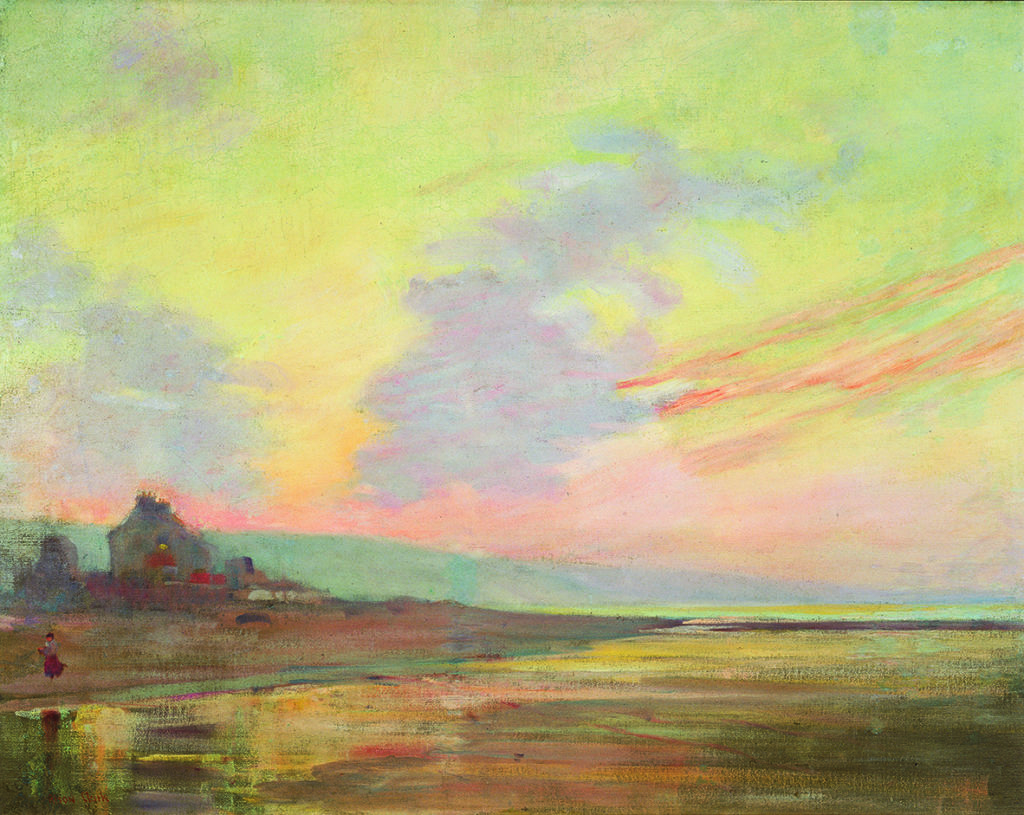
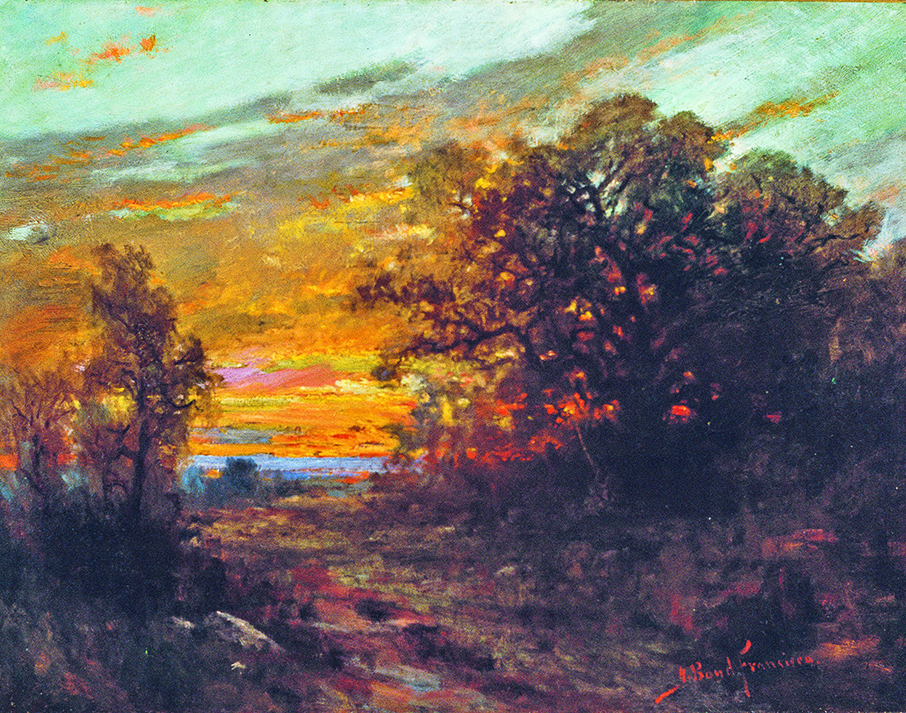
Soon it became clear that Mort was discerning and that he was serious about building a first-rate collection. So I took him to our storage room, something I rarely did with clients, as the lighting conditions there were far from optimal. I pulled out several paintings that I thought would interest him, and he selected two more works.
After about an hour, I wrote up the sale and gave him a copy of the invoice. He said he would send me a check when he got back to Phoenix. I said I would have them crated and sent upon receipt of payment. We shook hands and he walked out.
It was a memorable afternoon and quite a significant purchase. I have never before conducted a transaction where one client purchased so many of my best paintings. I have been in the art business since I was a child, helping at my father’s gallery, and had dealt with numerous collectors over the years. Mort’s transaction was quick, direct, substantial, and far from routine.
Experience had taught me to be wary of new collectors who pick out the very best paintings. I was concerned that I may never again see Mort or his check. The next day, an envelope arrived via overnight courier with the check. That was the last time I ever doubted Mort Fleischer.
On my visits to Scottsdale, Mort’s business kept him occupied for most of the day, but in the evenings we would have dinner, always at the best restaurants. We would talk about his growing collection and identify which artists should be added.
Number one on the list was Guy Rose, who is generally regarded as the very best California Impressionist painter. He is the only California Impressionist with a direct connection to French Impressionism, having lived in Giverny for eight years and been a friend of Claude Monet. At the age of 27, Rose contracted a serious bout of lead poisoning and he gave up oil painting for three years in mid-career. He suffered a debilitating stroke at the age of 54, which ended his art career. He died four years later.
Quickly, the Fleischer Collection grew. Mort added a magnificent painting by Donna Schuster, “In the Garden.” Painted in 1917, it shows the convincing influence of William Merritt Chase, with whom Schuster studied in Carmel in 1914.
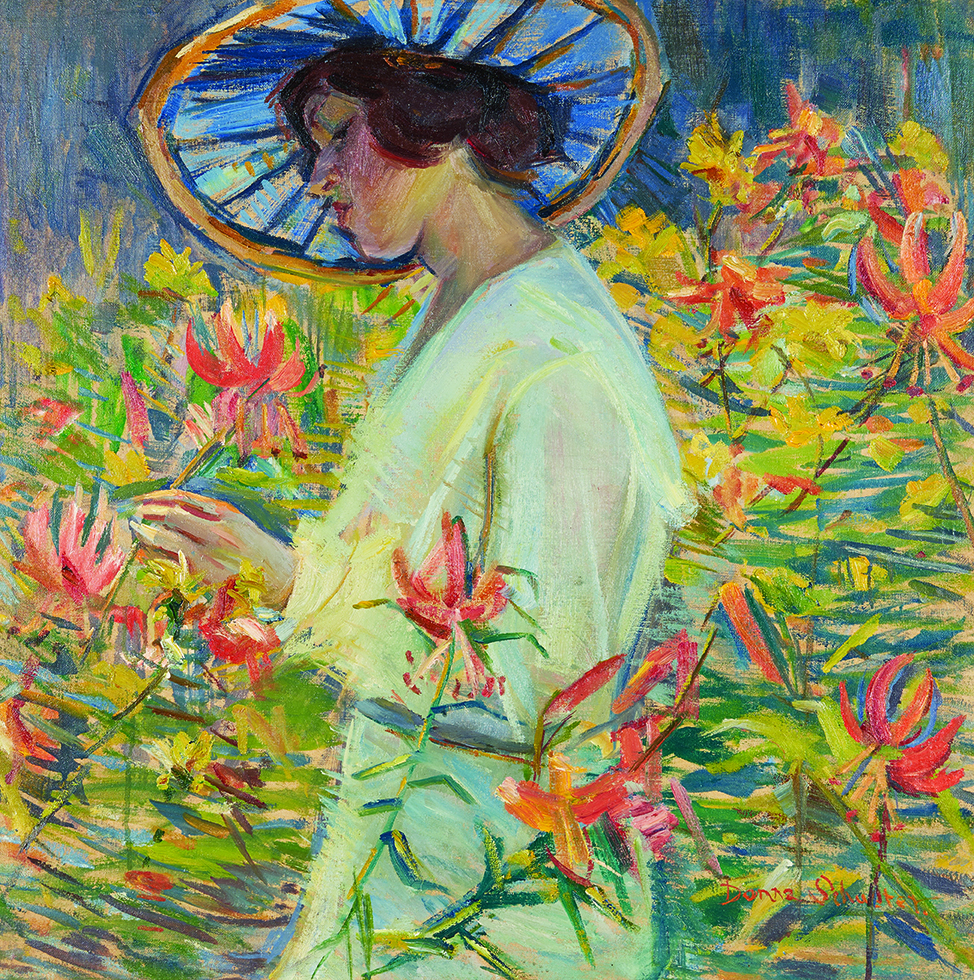
In addition, the collection acquired an elegant Colin Campbell Cooper called “A California Water Garden at Redlands,” set in the back garden of Kimberly Crest, at the time home of Mr. and Mrs. John A. Kimberly, of the Kimberly-Clark paper company.
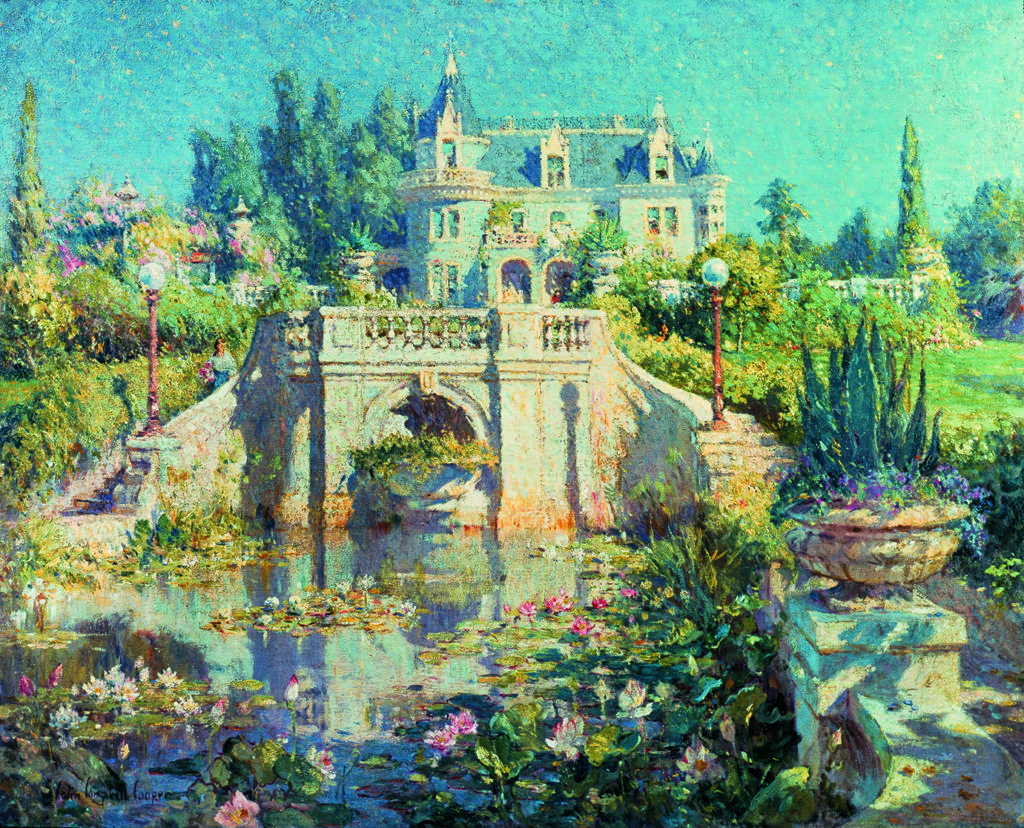
He also purchased “Blue Lake” by Edgar A. Payne; “Fish Market, Provincetown” by Christian von Schneidau; and several others, all from Petersen Galleries.

Although Mort was eager to add a Guy Rose to his collection, he wisely waited for the right one. In November 1984, I called him about an important painting by Rose that I had just acquired at a small auction in Michigan. It was “Mist over Point Lobos.” Again, Mort flew in to see it and immediately bought it. The painting quickly became the unofficial icon of the Fleischer Collection and is one of the most popular works by Guy Rose, appearing on posters, book covers, and notecards.

One day, I called Mort to tell him I was in the process of acquiring the most important work by Jessie Arms Botke I had ever seen. As he was looking for a present for his wife’s birthday, and as Donna was a professional horticulturist, an important painting by Jessie Arms Botke would be ideal. He asked me to describe it. It measured 48 by 64 inches and consisted of a huge bouquet of flowers set in a stone urn with a white peacock and two cockatoos. When I had secured the painting, he came to view the work and immediately purchased it. Some weeks later, at their home in Scottsdale, Donna and I stood in front of the painting while she counted more than twenty distinct varieties of flowers.
My relationship with Mort and Donna Fleischer did not end with Petersen Galleries, which closed when Robert Petersen sold his vast publishing company in 1991. Although I never again sold Mort a painting, I served as an advisor when he opened the Fleischer Museum and continued to do so for several years afterwards.
In 1992, I became executive director of the newly founded Irvine Museum. Established by Joan Irvine Smith and her mother, Athalie Richardson Irvine Clarke, the museum was from its inception dedicated to the California Impressionist style. Our first traveling exhibition, “Selections from the Irvine Museum” opened at the Fleischer Museum in 1992 and then traveled to the Oakland Museum and then back home to the Irvine Museum.
Over the years, I wrote three books on the collection. The first was Masterworks of California Impressionism: The F.F.C.A.-Morton H. Fleischer Collection, published in 1986. In 1989, I wrote American Impressionism: The California School, the official guide book for the Fleischer Museum Collection. When the collection was displayed at the eminent Gilcrease Museum, in Tulsa, Oklahoma, in 1991, we updated and re-issued Masterworks of California Impressionism to serve as the exhibition catalogue.
In 2018, my wife, Linda, and I were guests at Mort and Donna’s aptly named “Mor Do Ranch,” their 100-acre horse ranch in Scottsdale. At that time, we discussed publishing the conclusive book on the Fleischer Collection. Although there had been earlier books, they were not definitive, as the Fleischers continually added to the collection. We felt that the collection needed to be documented, since it was the first important collection to specialize in California Impressionism and had remained one of the best since it was founded in 1983.
Moreover, I told Mort that through this book, my name and my role would forever be linked to this magnificent collection. I broached the idea to James Irvine Swinden, president of the Irvine Museum. Since its founding in 1992, the Irvine Museum has been the definitive authority on California Impressionism.
As it was only fitting that the museum be associated with this pioneering collection, James Swinden immediately agreed to publish it. The book, The Fleischer Collection: Masterworks of California Impressionism, was published by the Irvine Museum in 2019. Thus, the Fleischer Collection and the legacy of Mort and Donna Fleischer will be accessible to future generations of art lovers.
> Sign up to receive Fine Art Today, our free weekly e-newsletter
> And click here to subscribe to Fine Art Connoisseur magazine, so you never miss an issue

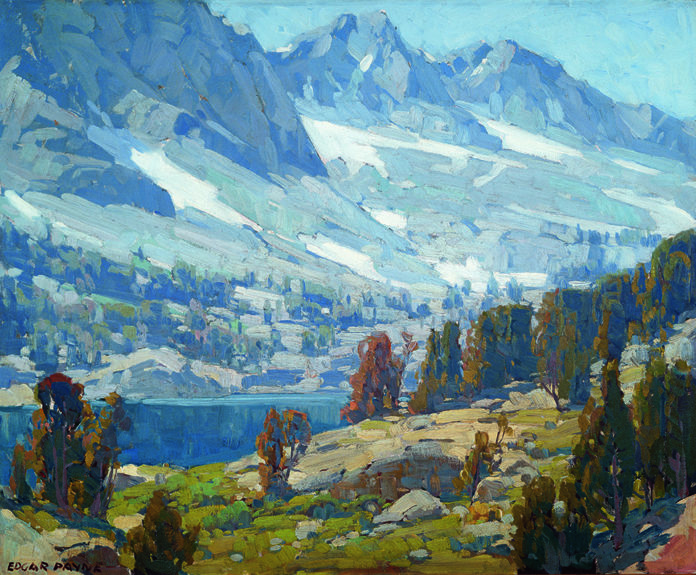







Is am curious about the history of the russian pieces in the Fleischer collection.
I remember seeing a number of pieces in a Arizona business headquarters feeling building a number of years ago, and was taken back to coming across my favorite piece of art ever, a piece like The Latest News, by Sergei Glinsky, which I’d come across in a stairway in the Hermitage in Russia.